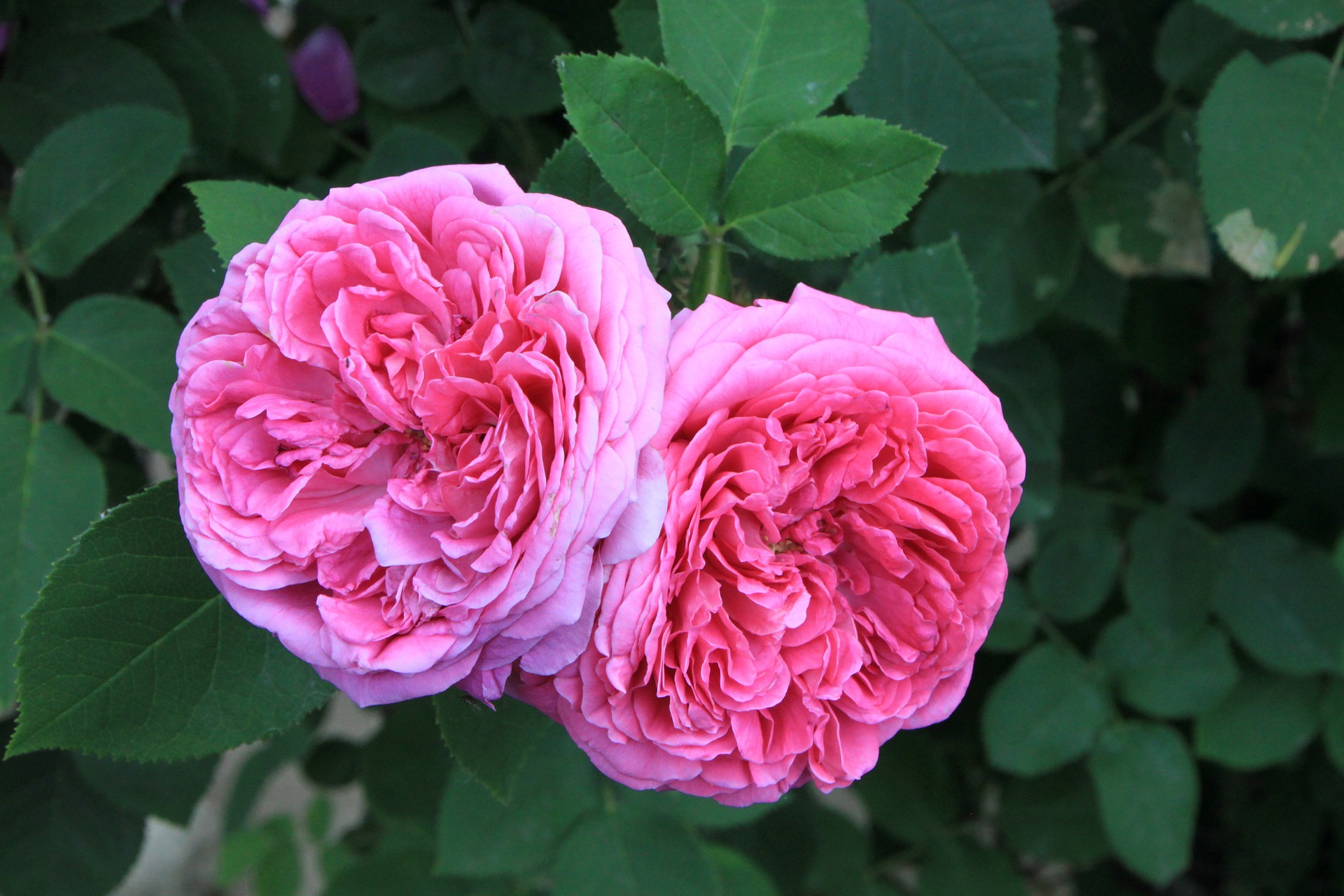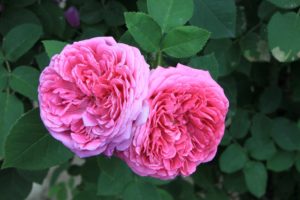Pass-Along Plants
Old fashioned roses including damasks are often passed along as cuttings from one gardener to another.
By Thomas Christopher
This is the premier shopping season for garden plants, and many purchases will be made in May by mail-order or by pilgrimages to local nurseries. Often, however, better results can be had by keeping your wallet in your pocket and looking closer to home.
This shopping success comes from looking for the success stories in neighbors’ gardens. Whether you are hunting for natives or treasures of exotic origin, the plants that are already thriving in your neighborhood are the best bet for your own property. Such plants have already proven their adaptation to the local climate, soil, and other conditions. Given exposure to a similar amount of sunshine and similar care to what they received in their former home, your locally sourced plants are almost certain to thrive.
All that’s needed to acquire such plants is the permission of the owners, which in my experience is usually freely given, and a familiarity with the basics of plant propagation. You can try collecting seed, but what will sprout from these may differ markedly from the parent you admired in the neighbor’s garden. The best way to acquire a real duplicate of some coveted specimen is to clone it. That sounds high-tech, but it’s easily accomplished by simply rooting a cutting.
To do this, first prepare a rooting bed. Select a spot that is brightly lit but without direct sunlight, such as the area on the north side of a wall or fence. A small plot just a few feet square will provide accommodation for plenty of cuttings. Ensure that the soil in your cutting bed is moisture retentive but also well-drained; mix equal parts of sphagnum peat and horticultural perlite with the existing soil.
Next, with a sharp knife, cut a shoot tip from the parent plant. When cloning herbs or annual and perennial flowers, it’s best to take a “softwood” cutting, a length of newly-grown, succulent stem, making your cut just below a node where a leaf or leaves sprout from the stem. For shrubs, a semi-hardwood cutting, a stem tip that is more mature, still flexible enough to bend easily but hard enough that it breaks with a snap, is better. Propagation manuals recommend taking semi-hardwood cuttings in late summer or fall, but I have found that such cuttings taken in late spring or early summer are also likely to succeed if they are sufficiently mature. Whatever type of cutting you are taking, though, I have found it best to place them immediately in a gallon-sized zip lock plastic bag with a wet paper towel to prevent dehydration and to get them into the rooting bed promptly.
When making softwood cuttings, take a 4-inch length of stem; semi-hardwood cuttings may be longer, from 4 to 6 inches. Sever the cutting just below a node, the spot where a leaf or leaves sprout from the stem. Trim off the lower leaves from the stem, leaving at least two in place at the top of the cutting. Dip the cutting in rooting hormone (available at most garden centers). Then with a pencil poke a hole in your rooting bed. Insert the lower half of the cutting the hole and firm in the soil mix around it with the pencil tip. Water the cutting well and cover it with a mini-greenhouse made by cutting the bottom off a 2-liter plastic soft drink bottle. On hot days, you can remove the cap from the bottle to ventilate the cutting.
Keep the soil around the cutting moist but not soaking wet and leave it undisturbed for at least 4 weeks. Then lift off the greenhouse and tug gently on one of the cutting’s leaves. If the cutting resists sliding out of the soil, it has probably rooted. Herbs, annuals, and perennials may be transplanted to the garden at once. Shrubs should be left in the rooting bed over the winter and then moved to a nursery bed with an appropriate amount of sunshine the following spring to be nurtured as they grow into larger plants able to hold their own in the landscape.
One point to keep in mind while pursuing pass-along plants is that it is possible for a plant to be too vigorous. Be sure to ask your neighbors if a plant has proven weedy and aggressive in their garden before introducing it into your own. You don’t want to provide an invitation to a weed or invasive plant.
Thomas Christopher is the co-author of “Garden Revolution” (Timber Press, 2016) and is a volunteer at Berkshire Botanical Garden. berkshirebotanical.org
Be-a-Better-Gardener is a community service of Berkshire Botanical Garden, one of the nation’s oldest botanical gardens in Stockbridge, MA. Its mission to provide knowledge of gardening and the environment through 25 display gardens and a diverse range of classes informs and inspires thousands of students and visitors on horticultural topics every year. Thomas Christopher is the co-author of Garden Revolution (Timber press, 2016) and is a volunteer at Berkshire Botanical Garden. berkshirebotanical.org.
Caption:




